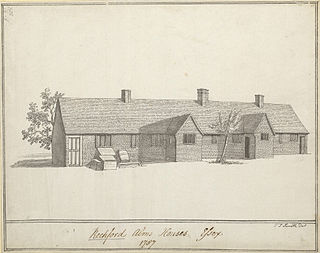
An almshouse is charitable housing provided to people in a particular community. They are often targeted at the poor of a locality, at those from certain forms of previous employment, or their widows, and at elderly people who can no longer pay rent, and are generally maintained by a charity or the trustees of a bequest. Almshouses were originally formed as extensions of the church system and were later adapted by local officials and authorities.
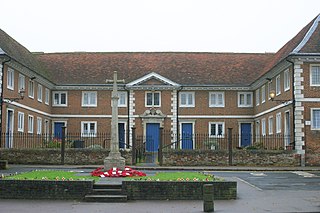
Buntingford Almshouses is a grade II* listed building on the High street of the Hertfordshire town of Buntingford. The building was erected in 1684 by the mathematician and astronomer Bishop Seth Ward who was born in the town. The architect was probably the celebrated scientist and architect, Robert Hooke.

Bramcote is a suburban village in the Broxtowe District of Nottinghamshire, England, between Stapleford and Beeston. It is in Broxtowe parliamentary constituency. The main Nottingham–Derby road today is the A52, Brian Clough Way. Nearby are Beeston, Wollaton, Chilwell and Stapleford. One of the main roads between Nottingham and Derby used to pass through the village centre, entering a cutting that formed a blind bend. A country house to the north of the village became publicly owned and was demolished in 1968. Its grounds became a public area of park and hillside, now known as Bramcote Hills Park.

Brandiston is a small village and civil parish near the centre of the county of Norfolk, England, about two miles south-east of the small market town of Reepham, five miles south-west of the larger town of Aylsham and 10 miles north-west of the city of Norwich. For the purposes of local government, it falls within Broadland district. The hamlet of Guton lies within the parish.

Carrington is a small suburb of Nottingham, England, located approximately 1.3 miles (2.1 km) north of Nottingham city centre. It lies next to the areas of Sherwood, Mapperley, Forest Fields, Basford, Sherwood Rise and the Forest Recreation Ground.
Thomas Cecil Howitt, OBE was a British provincial architect of the 20th Century. Howitt is chiefly remembered for designing prominent public buildings, such as the Council House and Processional Way in Nottingham, Baskerville House in Birmingham, Newport Civic Centre, and several Odeon cinemas. Howitt’s chief architectural legacies are in his home city of Nottingham. He was Housing Architect for the City Council, designing municipal housing estates which are often considered to be among the finest in terms of planning in the country.
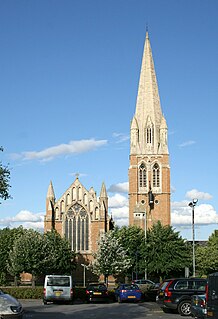
Daybrook is a suburb of Arnold, Nottinghamshire. The area is located just outside the city of Nottingham but inside the conurbation of Greater Nottingham. It lies next to the areas of Arnold town centre, Sherwood, Woodthorpe, Redhill and Bestwood.
Abel Collin (1653–1705) was a benefactor in Nottingham. He established Abel Collin's Charity.
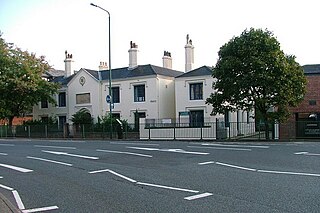
Plumptre Hospital was a charity in Nottingham providing almshouse accommodation for 599 years from 1392 to 1991.

The Frances Jane Longden Almshouses were erected in 1852 in Bramcote, Nottinghamshire, for 4 poor women.

The Norris Almshouses were erected in 1893 on Berridge Road in Sherwood Rise, Nottinghamshire.

The William Woodsend Memorial Homes were erected in 1912–13 on Derby Road in Lenton, Nottingham.

Canning Terrace was erected in 1837-1840 on Zion Hill at Canning Circus, Nottingham.

The Sir John Robinson Almshouses are a collection of twelve two-bedroom cottages erected in 1899 on Mansfield Road, Daybrook, Arnold, Nottingham.

Miss Cullen's Almshouses in Carrington, Nottingham is a complex of 12 almshouses erected in 1882-83. They are also known as the Cullen Memorial Homes.

William Jolley was an English architect based in Nottingham.
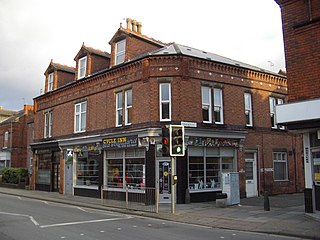
Walter Owen Hickson was an architect and surveyor based in Nottingham.

Nottingham General Cemetery is a place of burial in Nottingham, England which is Grade II listed.

John Frederick Dodd LRIBA was an architect based in Long Eaton, Derbyshire.
















